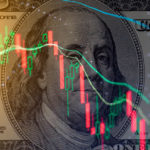
(WASHINGTON) — The U.S. economy is expected to have expanded significantly when the government releases data on Thursday, marking a dramatic reversal from the contraction experienced over the first half of the year.
The economic growth would defy Federal Reserve efforts to slow economic activity and slash consumer demand in its fight against inflation.
The data arrives less than two weeks before the midterm elections, possibly bolstering Democratic claims of economic stewardship as polls show voters prefer Republicans on the issue.
Fears of an imminent recession may quiet in response to the data, which ends the streak of two consecutive quarters of negative gross domestic product that many consider shorthand for identifying a downturn as a recession.
The National Bureau of Economic Research, or NBER, a research organization seen as the formal authority for identifying recessions, uses a more complicated definition that takes into account an array of factors. Many economists believe the U.S. has averted a recession so far this year.
U.S. GDP is expected to have grown 3.1% over the three months ending in September, according to a tracker from the Federal Reserve Bank of Atlanta. Economic activity shrank a combined 2.2% over the first six months of the year.
Still, the positive overall indicator may veil signs of a cooling economy. The economic growth is expected to stem in part from a reduced trade deficit, signaling that the U.S. narrowed the gap between imported and exported goods, compared to the previous quarter. But that development also suggests that U.S. demand for imported goods has weakened.
In an effort to dial back inflation, the Fed has raised the benchmark interest rate by 0.75% at each of its last three meetings. Prior to this year, the Fed last matched a hike of this magnitude in 1994.
The rate increases appear to have slowed key sectors of the economy, sending mortgage rates soaring and slowing the construction of new homes.
U.S. hiring remains robust, however. Employers added 263,000 jobs in September and the unemployment rate fell slightly from 3.7% to 3.5%.
But hiring has fallen from a breakneck pace sustained earlier in the year, suggesting that the Fed’s rate hikes may have begun to cool off the labor market. By the end of 2023, central bank moves will raise the unemployment rate from its current level of 3.7% to 4.4%, the Fed predicted last month.
Copyright © 2022, ABC Audio. All rights reserved.
